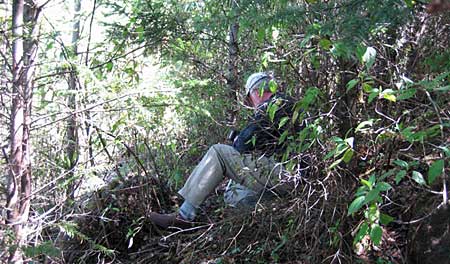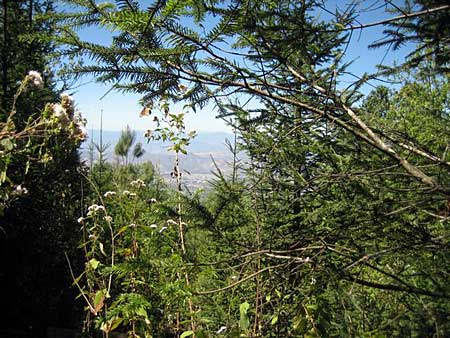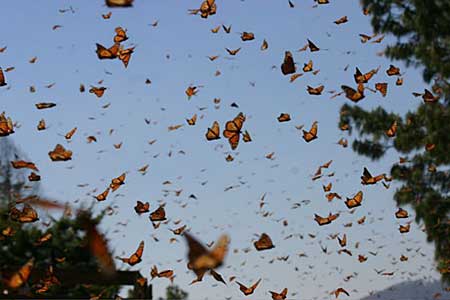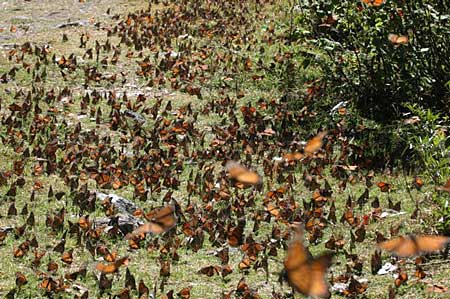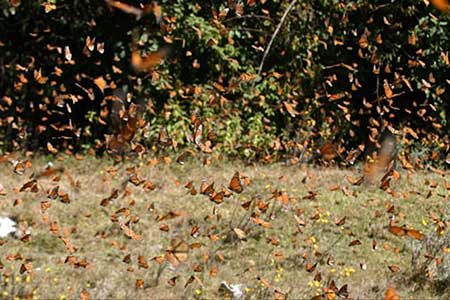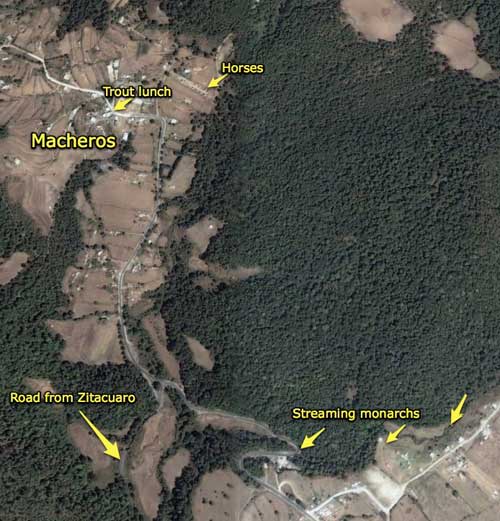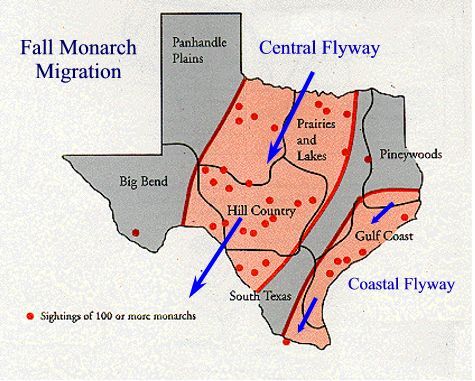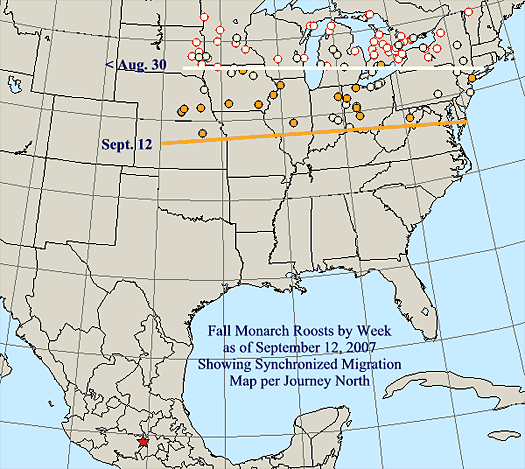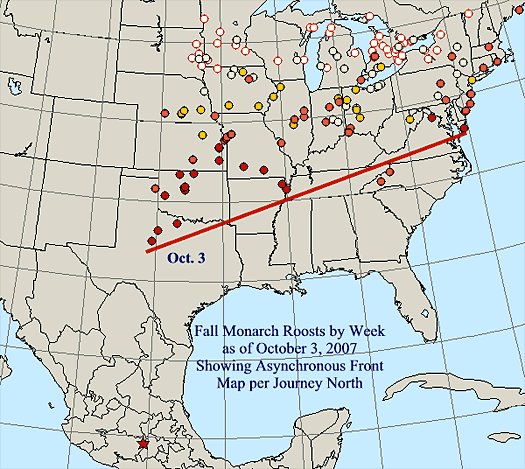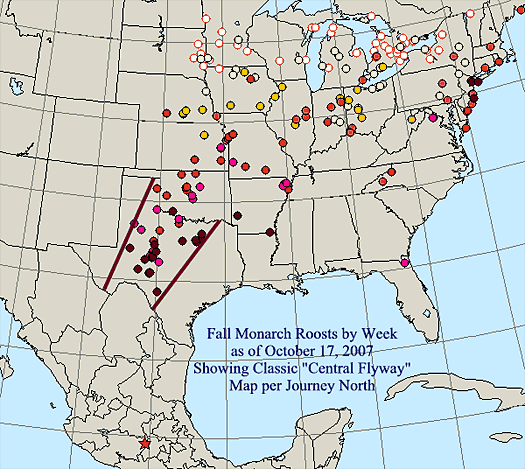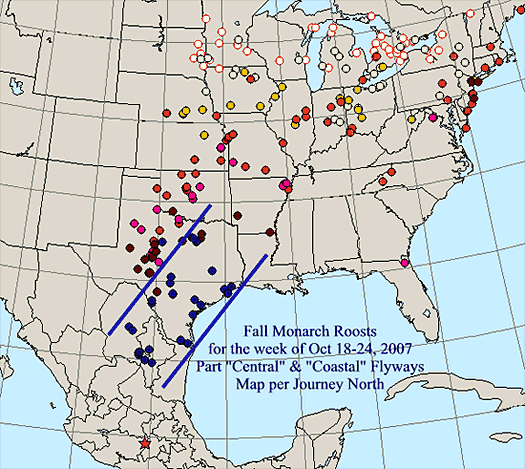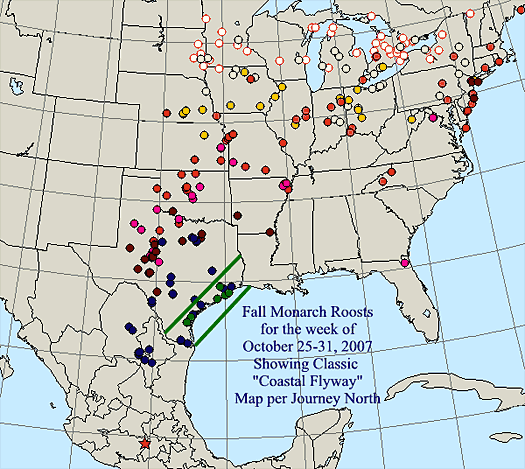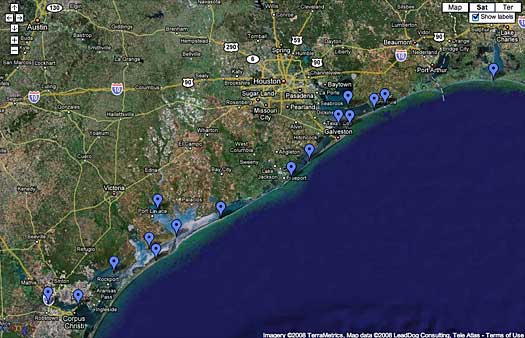Monarch Spotted “Way Up North” in 2007
11 February 2008 | Author: Jim Lovett From time to time we receive a monarch story that is so compelling and well put together that it needs to be shared. The following account was received from Mick Callas, who was inspired to write us after having a chance encounter with a monarch in an area of the continent well beyond the northern limits of milkweeds and where such sightings are extremely rare.
From time to time we receive a monarch story that is so compelling and well put together that it needs to be shared. The following account was received from Mick Callas, who was inspired to write us after having a chance encounter with a monarch in an area of the continent well beyond the northern limits of milkweeds and where such sightings are extremely rare.
Greetings, Monarch Watch! My name is Mick Callas, and I’ve been an amateur lepidopterist since my Navy uncle brought me my first case, net, and specimen butterflies in 1958.
I’ve always had an interest in the butterfly world and a desire to share it with others. Retired now and on disability, I still love taking my collection to primary and secondary schools, explaining the various families of butterflies and what devices they use to survive in nature. This winged jewelry never fails to amaze children and I’m often amused when stopped on the street by some 30 or 40 year old who says, “You’re the butterfly man, aren’t you? I was in 6th grade when you showed them to me – now I show them to my kids.” That is very rewarding.

And the children teach me as well. One question that began coming up was, “gee, Mr. Callas, they sure are pretty, but do you have to kill them?” Good question. I now hunt them with my camera, and build “collections” of pictures.
Another fine recollection is when I was stationed in Vietnam, in 1968. I had no interest in the war, or painting my face black and going to hunt humans in the forest. But the butterflies! Oh, the butterflies! So I’d take my net and go hunting. Twice I ran into “the bad guys” – I was never certain who the bad guys were, them or us – but I never had trouble. I didn’t carry a gun and would simply explain what I was doing to these other young men, dressed in black with grim but inquisitive faces. They became mesmerized, so fascinated were they that this dumb white guy from wherever – Millionaireville, America – was wandering around, unarmed, and so interested in their insects. Then we’d smoke the peace pipe together and depart. This story got around camp, and the Captain came down on me. Confined to base.

So I recruited a small army of kids – children of the civilian employees on base – showed them how to capture, dispatch and package butterflies in triangular envelopes. The stuff they’d bring in! I still have a number of cases of those insects.

Anyway, the reason I’m contacting you…
I moved from Oregon to North Eastern British Columbia (B.C.) in 1979. Among all the other amazing things to do in the Canadian Rockies, was butterfly collecting. To this day I keep a sharp eye out for flutter-bys. Last summer I was out fishing, standing on a road, and an RV whizzed by. Something caught my eye – a large butterfly had gotten caught in the turbulence and crashed to the ground, right in front of me. Now I’ve been living here, 800 kilometers North of the U.S. border, for 28 years. I have three specimen cases to demonstrate B.C. butterflies – specifically Robson Valley butterflies. The Robson Valley is in the Rocky Mountain Trench, at an altitude of 3,000 feet. And here before me was a dying Monarch. I had never seen one, or even heard of one, around here. Oh, people say, “Yes, I see Monarchs all the time.” No you don’t. You see a large Tortoise or Fritillary. I saved the insect, mounted it, and showed it around. Without exception, those people all said, “THAT’S a Monarch? Wow!”
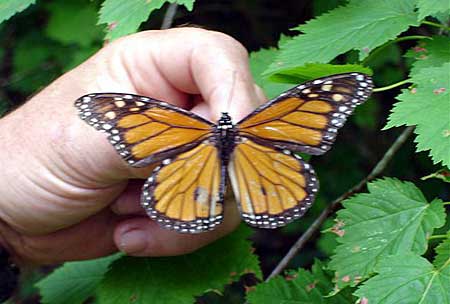
Later I got to thinking, “I wonder if this incident is really as unusual as I think it is.” Then I read an article in the Vancouver Sun newspaper on Monarchs, and an article on the web. The web article referred to Monarch Watch, so here I am, reporting.
Well…is it unusual? The web article “The Return of the Monarch” by Robert Sheppard (CBC News, July 30, 2007) mentioned in part, “they seem to be really expanding their northern reaches.” And that Monarchs have “developed a unique annual migration that can see them trek over 4,000 kilometers – from Mexico to the Great Lakes region and back in eastern North America, and from Southern California to southern B.C. and back to the West.” I am most certainly not near southern B.C. In fact, you can spot me on a map in Dunster, B.C., on Yellowhead Highway 16, between Prince George, B.C. and Jasper, Alberta. We are “way up North.”
Drop me a line when you have some time between counting butterflies.
Best Regards,
Mick
Monarch Watch: What is unusual about this observation is that the butterfly was found well north of the known limits of milkweed. However, cases like this happen most years. Some monarchs even make it to Newfoundland from time to time.
Sighting Location (zoom out for more of a butterfly’s eye view):
View Larger Map
Mick: The small village of Dunster (pop. 200) has a gas station/general store across the river, and is located 20 miles east of the town of McBride – the nearest “town”. Another 20 miles east of Dunster is the village of Tete Jaune, where the Monarch was found. Tete Jaune is a natural meeting from ages past – 3 glaciers converged there, so the natural topography of valleys – the main one being the Rocky Mountain Trench, at 3,000 ft. elevation – may have been how such an insect found its way here. Heh-heh…it’s probably how I found my way there in ’79!
An interesting bit of history on Tete Jaune…during the Klondike Gold Rush (started in 1896), it was one of, if not THE largest town in British Columbia, with a very dangerous, rowdy population of 8-9,000 people. There must have been a small army of Mounties to control the cutthroats, camp followers, and dreamers.
Filed under General | 4 Comments »
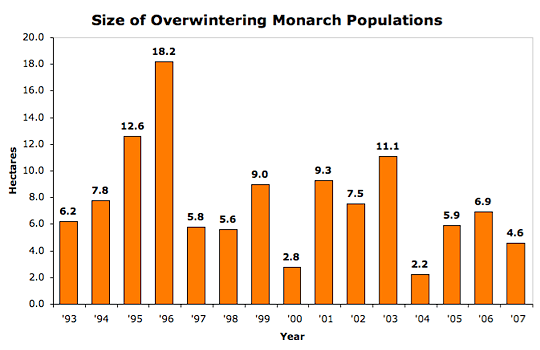
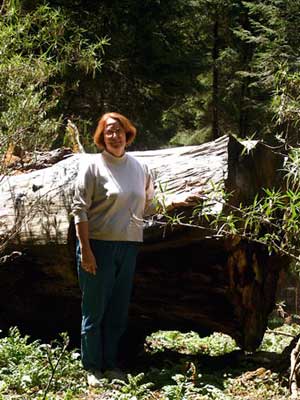
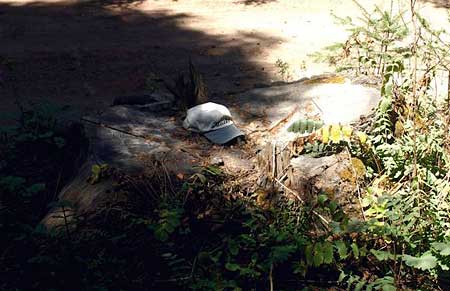
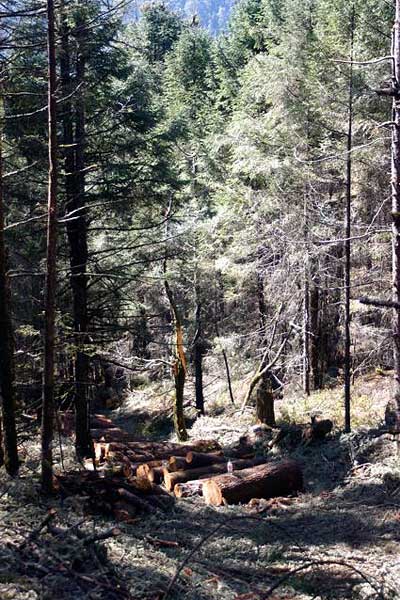
 We are now accepting orders for the
We are now accepting orders for the 